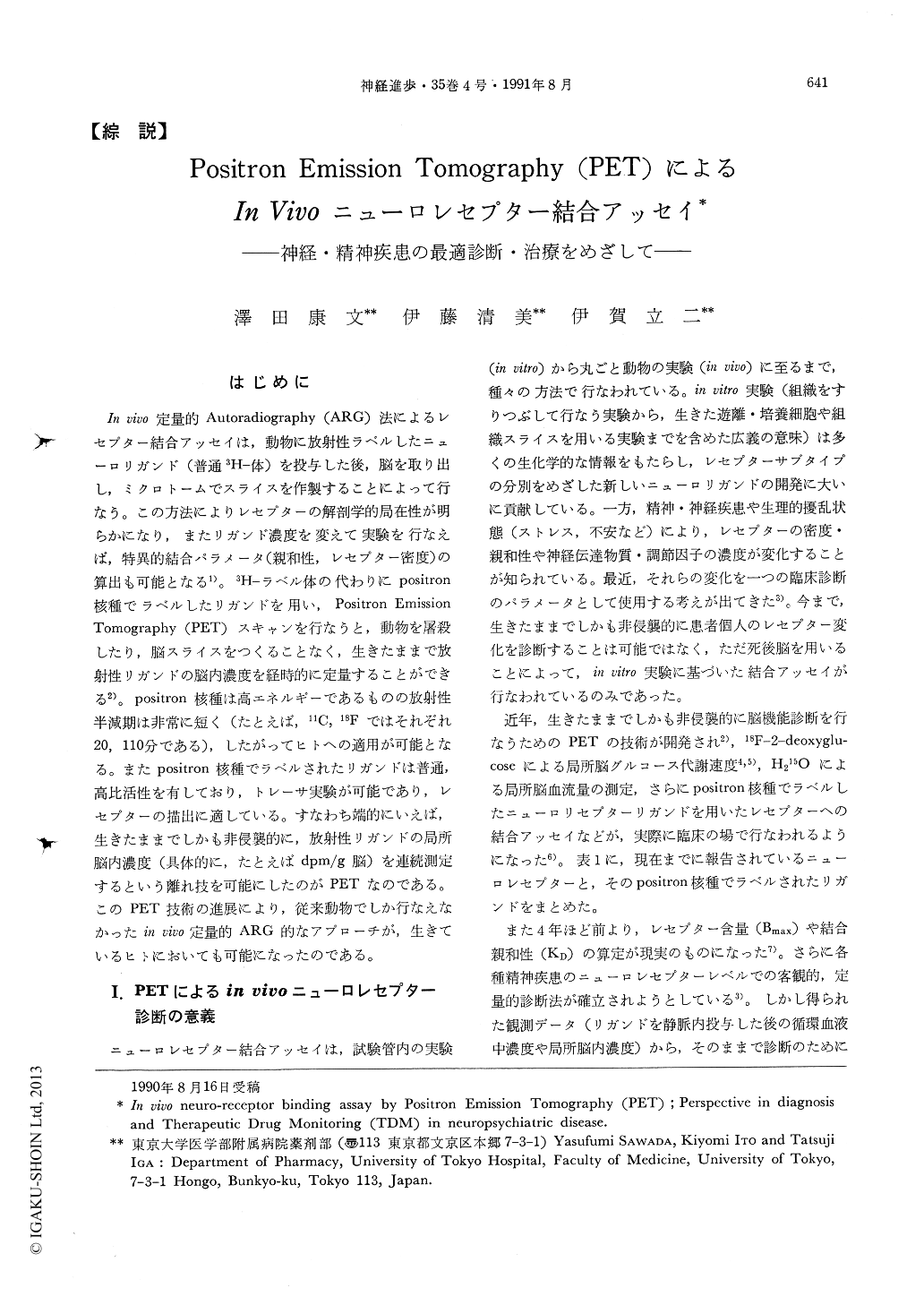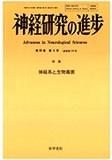Japanese
English
- 有料閲覧
- Abstract 文献概要
- 1ページ目 Look Inside
はじめに
In vivo定量的Autoradiography(ARG)法によるレセプター結合アッセイは,動物に放射性ラベルしたニューロリガンド(普通3H-体)を投与した後,脳を取り出し,ミクロトームでスライスを作製することによって行なう。この方法によりレセプターの解剖学的局在性が明らかになり,またリガンド濃度を変えて実験を行なえば,特異的結合パラメータ(親和性,レセプター密度)の算出も可能となる1)。3H-ラベル体の代わりにpositron核種でラベルしたリガンドを用い,Positron Emission Tomography(PET)スキャンを行なうと,動物を屠殺したり,脳スライスをつくることなく,生きたままで放射性リガンドの脳内濃度を経時的に定量することができる2)。positron核種は高エネルギーであるものの放射性半減期は非常に短く(たとえば,11C,18Fではそれぞれ20,110分である),したがってヒトへの適用が可能となる。またpositron核種でラベルされたリガンドは普通,高比活性を有しており,トレーサ実験が可能であり,レセプターの描出に適している。すなわち端的にいえば,生きたままでしかも非侵襲的に,放射性リガンドの局所脳内濃度(具体的に,たとえばdpm/g脳)を連続測定するという離れ技を可能にしたのがPETなのである。
Positron emission tomograpy (PET) is an analytical imaging technique that permits the measurement of regional, specific biochemical events in human brain in vivo. To obtain quantitative information of biochemical parameters with PET, three major components are required: 1) a positron tomograph; 2) positron-emitting labeled tracers; and 3) tracer pharmacokinetic models. Using this technique dopamine, benzodiazepine, opioid and cholinergic receptor biochemistry has been studied in living animals and humans. The work carried out on the in vivo characterization of neurotransmitter systems has been directed to revealing receptor localization and affinity/number, the pharmacological character of ligand binding and the kinetic changes with physiological and pathophysiological alterations. In this article, we will review the methodology for pharmacokinetic analyses of tissue distribution data of neuroreceptor ligands and evaluate the pharmacokinetic parameters (receptor density, affinity and receptor occupancy of psychotropic drugs etc.) in physiological and pathophysiological states.

Copyright © 1991, Igaku-Shoin Ltd. All rights reserved.


